IN THIS ARTICLE
Add to a single product
To add a payment plan to a product:
- Select or Edit the product that you want to apply a payment plan.
- Make sure the Product data is set to Simple product or Variable product.
- Click on the Payment Plans tab, as pictured below.
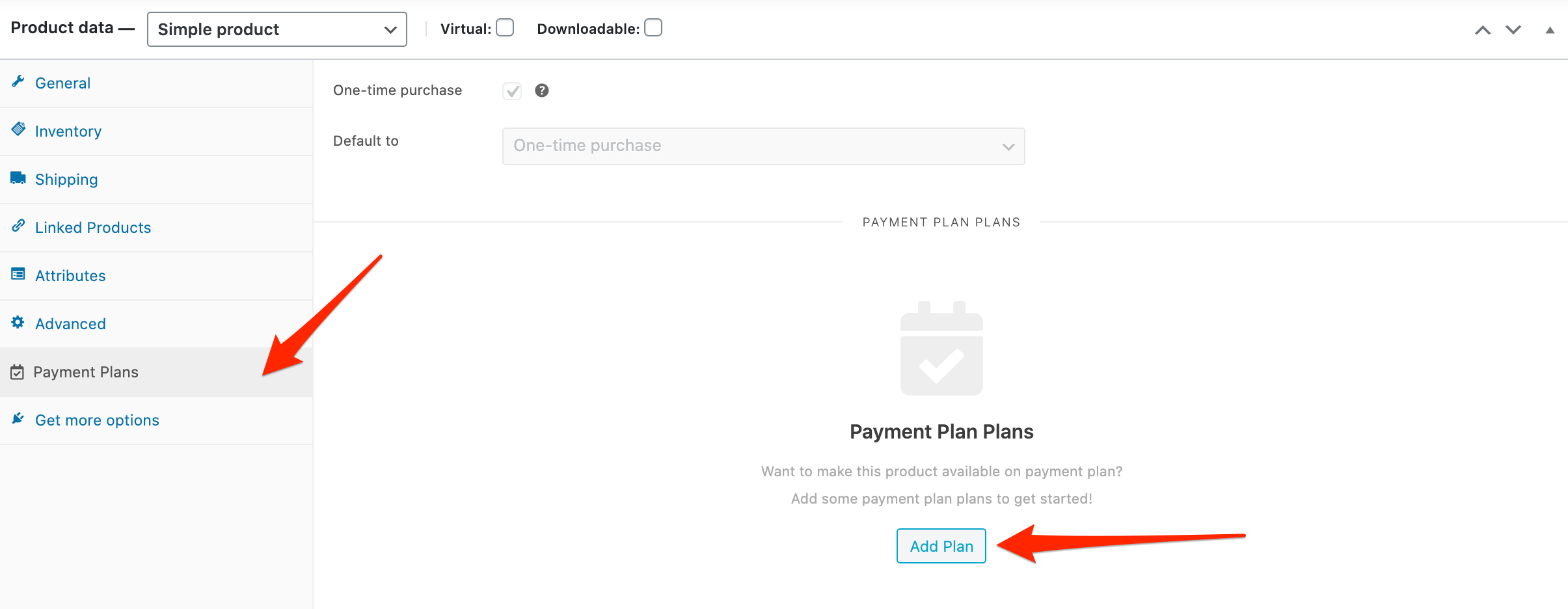
- Click Add Plan to add a payment plan. Every plan that you add here will create a plan option that customers can choose above the Add to cart button.

- Set the terms for the payment plan, including price, billing interval, billing period, length.
- Optionally uncheck One-time purchase to prevent customers from purchasing the product one-off. Note: if you add a payment plan and disable One-time purchase, customers will not be offered any options above the Add to cart button.
- Optionally, if applicable, use the Default to field to set the preselected option. This is applicable only when One-time purchase is enabled.
- Optionally enter a custom Subtext. This is the text that is displayed below the available purchase plans on the product page.
- Optionally enter a custom Description. This is the text displayed below the Subtext on the product page.
- Click Update.
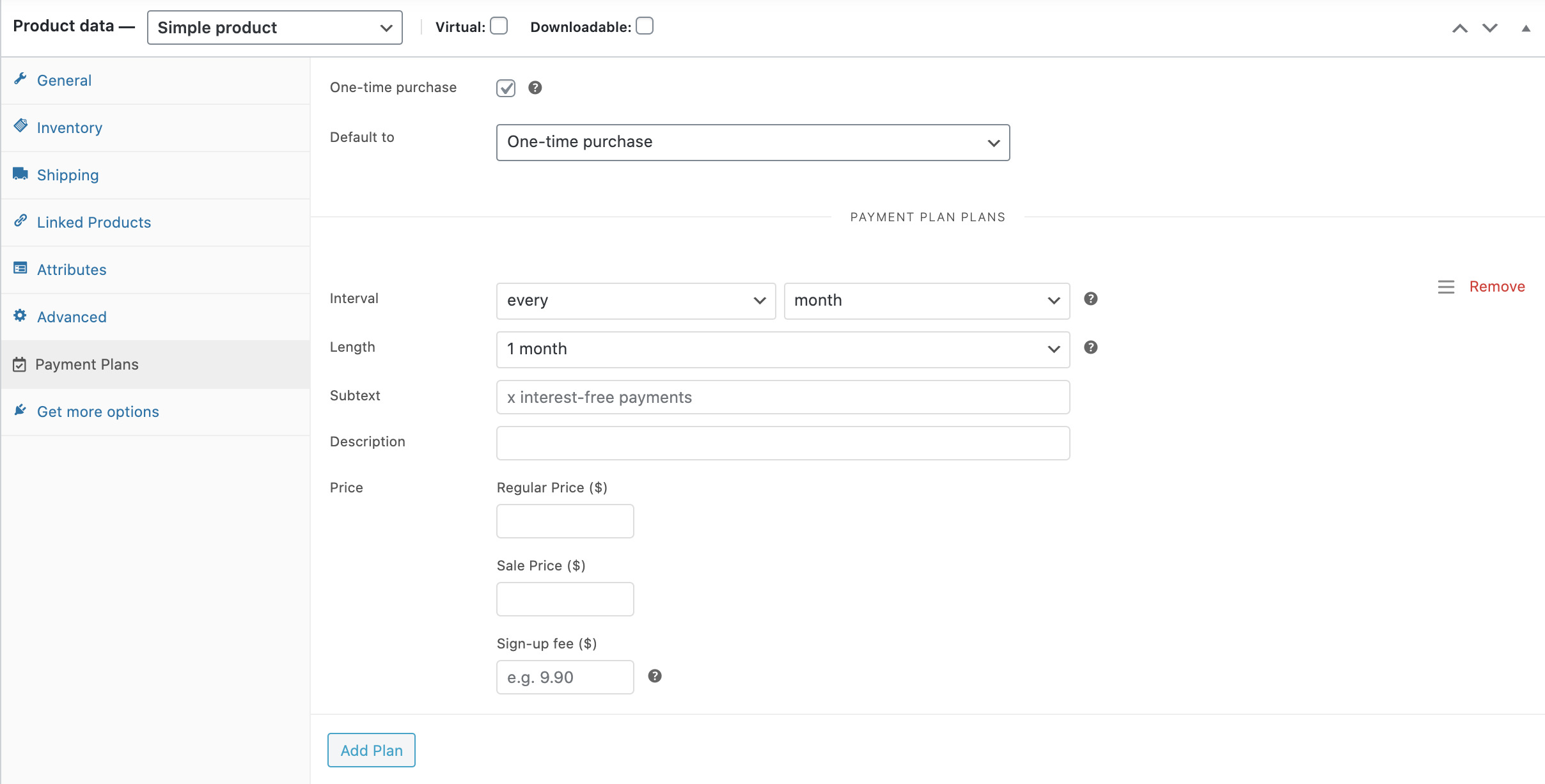
When purchasing a product with payment plans, customers may choose to pay with a payment plan or pay in full before clicking the Add to Cart button. For example, the Retro Sneakers can be purchased with a payment plan or by paying in full:
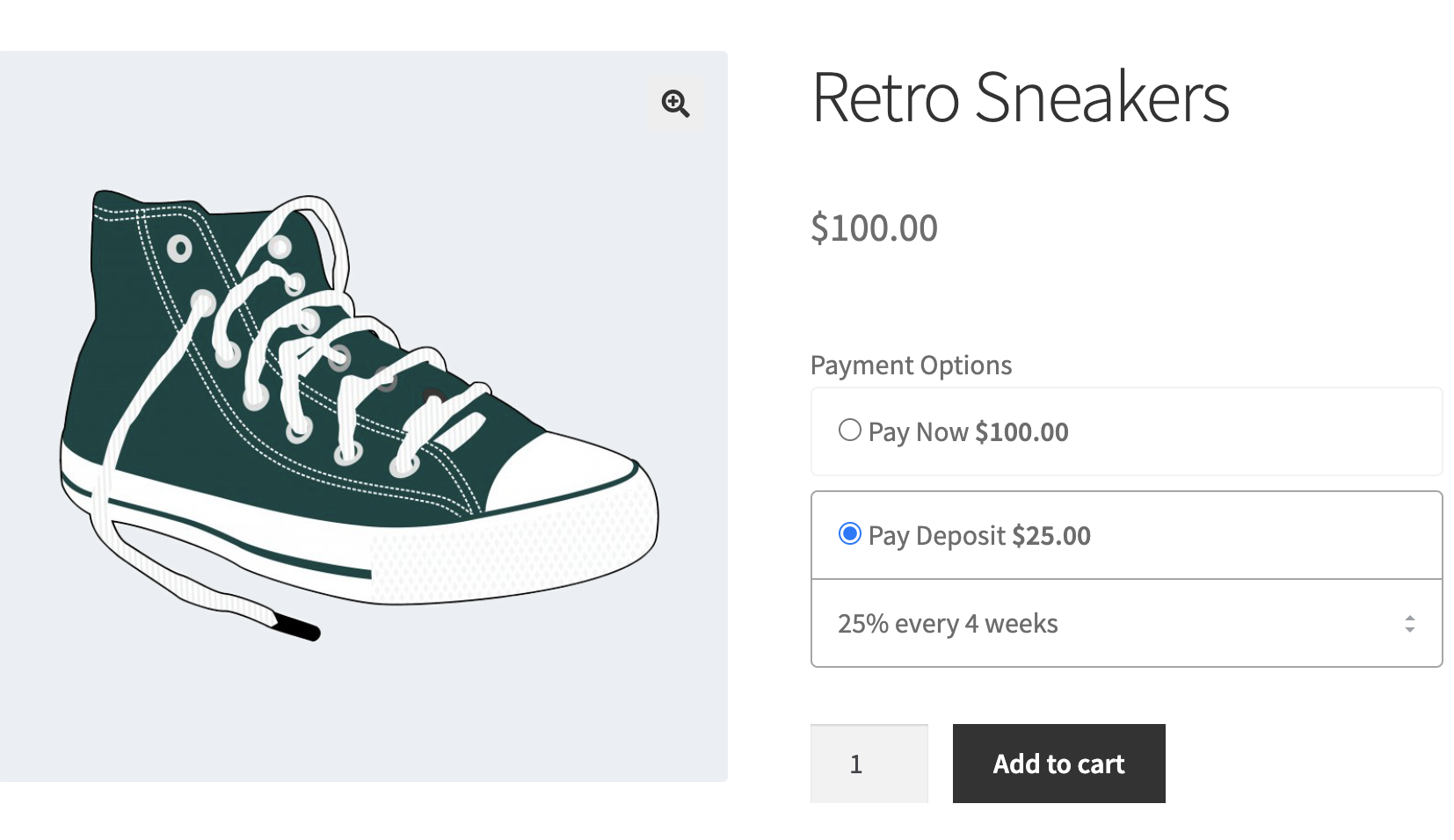
The extension supports Simple products, Variable products, Product Bundles and Composite Products.
Note: while the plugin does support variant products, at the moment you must offer all variants for the same price. In the future, we plan to offer support for variant products with differing prices.
Choosing the Payment Schedule
Payment Plans give you a lot of flexibility in scheduling renewals for your payment plan products.
You can charge renewal payments using a billing period of daily, weekly, monthly or annually, and at any interval between 1 and 6. Want to charge every 2 weeks? Set the interval to every 2nd week. Want to bill monthly? Set the interval to every month. Want to invoice quarterly? Set the interval to every 3rd month and the length to 4 months.

For example, let’s say that your online store sells Retro Sneakers for $100. Your customers can have the option to pay 4 installments every 30 days:
- $25 at time of sale
- $25 30 days later
- $25 60 days later
- $25 90 days later
If you want to split installments over a longer period of time (90 days), you can offer customers the option to pay 4 installments every 90 days:
- $25 at time of sale
- $25 90 days later
- $25 180 days later
- $25 270 days later
If you want to have more than 4 installments and split the installments over a shorter period of time (for example, 8 Weeks), you can offer customers the option to pay 8 installments every 7 days:
- $12.50 at time of sale
- $12.50 7 days later
- $12.50 14 days later
- $12.50 21 days later
- $12.50 28 days later
- $12.50 35 days later
- $12.50 42 days later
- $12.50 49 days later
Payment Plan Pricing
You can optionally offer a price that is unique to each product’s payment plan.
To enter payment plan prices, locate the Price, and enter an amount for Regular Price. For example, to offer a payment plan on a $100 product with an interval to every month and the length to 4 months, enter 25. The amount entered will represent the initial payment, as well as the remaining installment payments.
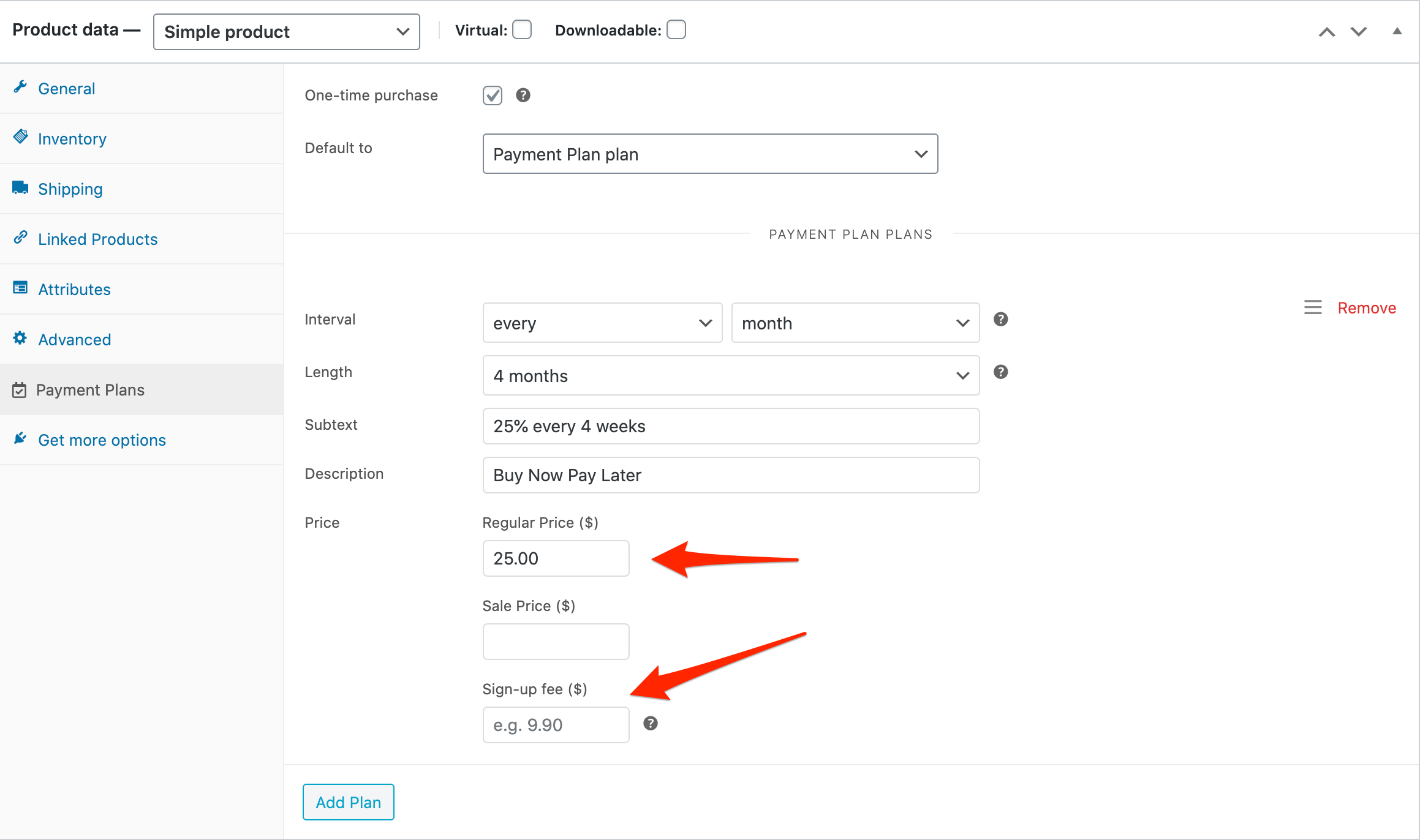
Note: you can optionally enter a Sign-up fee ($). This is the amount that will be charged at the outset of the payment plan. The fee will be charged immediately.
For more information about sign-up fees, see Adding a sign-up fee to a Payment Plan.
Display on Product and Cart pages
On the frontend, payment plans are shown on the single product page above the Add to cart button. To see how your payment plans will display, click Preview Changes:
If a one-time purchase is enabled (the payment plan is optional), the following will display:

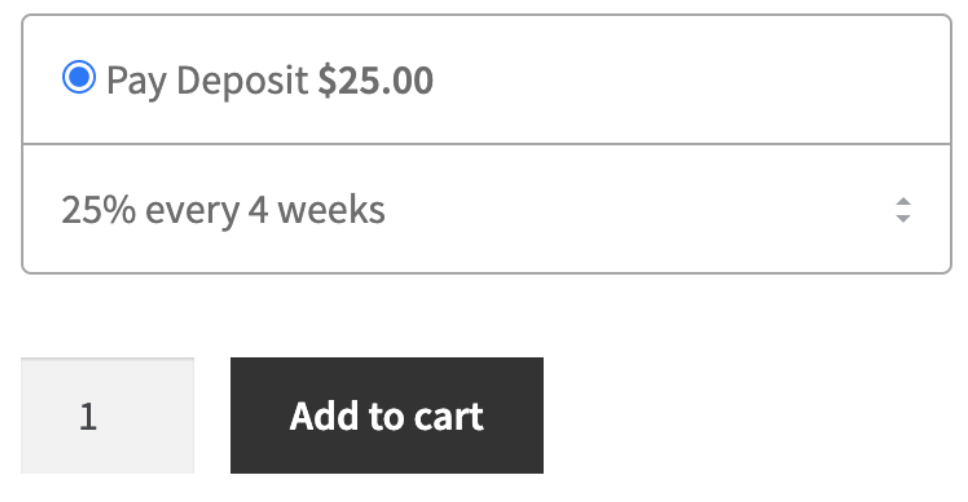

It will also display in the cart totals:
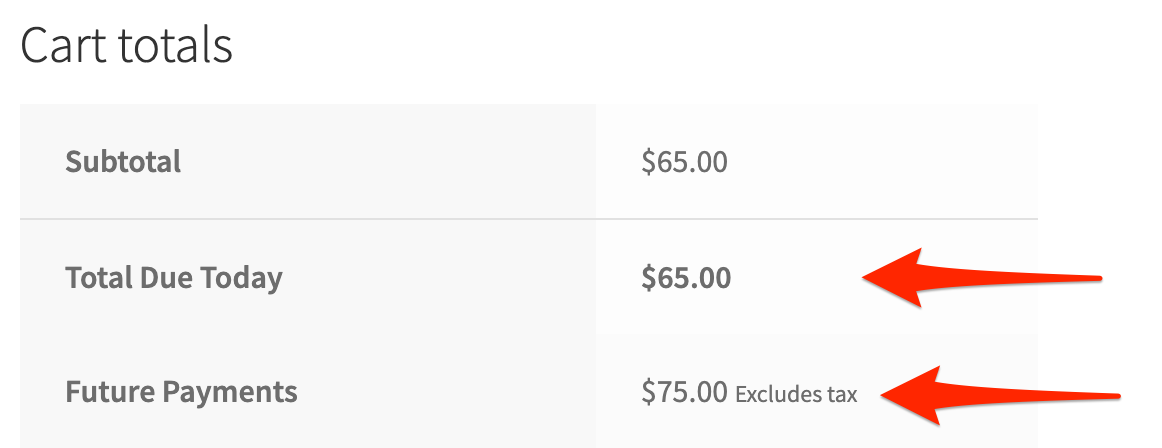
NEXT PAYMENT DETAILS

Video
If you are more of a visual learner, see the video tutorial below:
Did this answer your question?